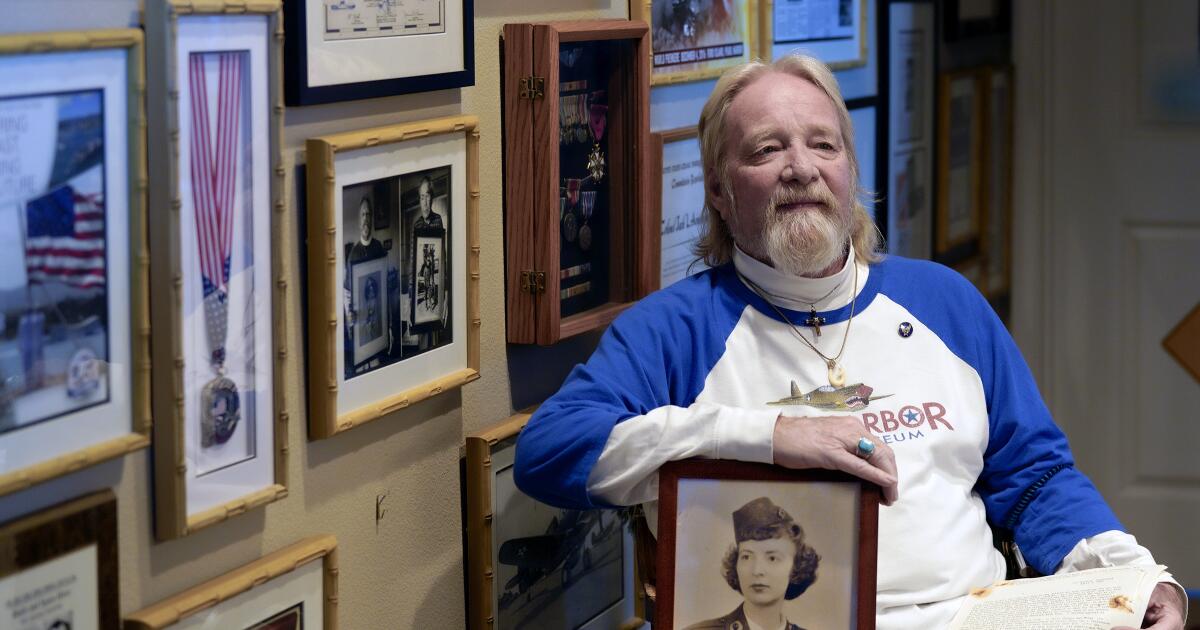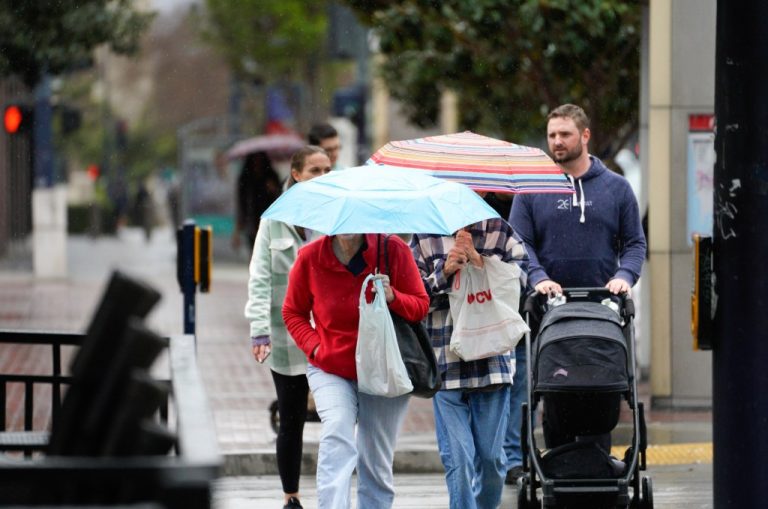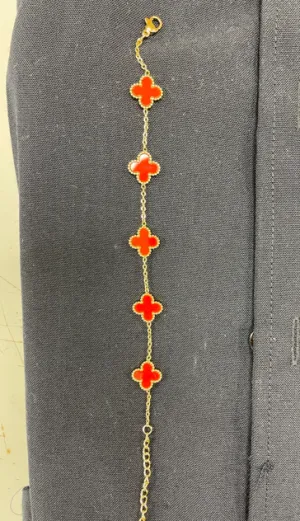
Jim Armstrong of Pacific Beach held up the sheets of stained, faded paper: “Here’s what happened when the Japanese attacked Pearl Harbor.”
Eighty-two years ago today, when Japan made the surprise raid that plunged the U.S. into World War II, Armstrong’s father, Jack, was an Army Air Corps bombardier at Oahu’s Hickam Field, and his mother, Audrey, was a Red Cross nurse.
Months later, she would meticulously type a six-page letter to her family in Minneapolis describing in harrowing detail what happened — a letter that her son, now 71, says he discovered only a few weeks ago, thumbing through a long forgotten book.
He’d already learned a lot about the attack, which killed more than 2,400 people, from his parents. And over the past decade, Armstrong has helped repatriate some personal effects that his father had collected from a Japanese pilot who crashed on the Hawaiian island of Ni’ihau.
“But there are things in the letter that are new to me,” Armstrong said. “I want to share this because my mother stood in my father’s shadow. We hear about what happened to the soldiers, but not much about the women, the nurses.”
The attack began at 7:55 a.m. on a Sunday, mostly with Japanese planes arriving out of the east. Jack and Audrey had been socializing with friends until the wee hours.
Suddenly, bombs were dropping.

Smoke rises from the battleship USS Arizona as it sinks during the Japanese attack on Pearl Harbor.
(Uncredited / Associated Press)
Audrey later wrote:
Jack ran to the windows, pushed me back (I had followed right at his heels) and said, “Get some clothes on quickly — those planes aren’t ours.”
With that, he was into his clothes and out of the apartment. Apparently this was a similar experience on Hickam Field as men came running out of every apartment and house. They knew after one quick glance in the direction of our hangers that we were being attacked. Incendiary bombs had already been dropped, the symbol of “The Rising Sun” on the planes overhead was clearly visible.
Jack came back with some last minute instructions such as sitting in the far corner of the living room where ceiling beams were strongest — away from all windows and doors. He also suggested that I join any group of women I might find in close proximity.

Audrey Armstrong’s six-page typewritten story of the attack recently was discovered by accident by her son, Jim Armstrong.
(Nelvin C. Cepeda/The San Diego Union-Tribune)
Audrey ignored the request and ventured outside.
The (hangars) were a cloud of smoke — the beautiful million dollar air corps barracks were likewise, blazing buildings. Both of these were less than four blocks away from our apartment. The entrance to Pearl Harbor was approximately 6 blocks to the left of us. The enemy planes flew very low and directly overhead. The concussion of the bombs when they hit was terrific. The buildings actually shuddered.
Several of the girls in our apartment unit ran and I mean ran to the home of Lt. (Dr.) Garrett, where, we had been told, other women had gathered. No sooner were we inside the house, a double bungalow with very little structural protection, when he heard the drone of planes again. It kept getting louder and louder.
We all huddled together on the floor of a narrow corridor leading to the bedrooms. We piled every available pillow, chair and davenport cushions on top of us to protect us from any shrapnel or debris in the event our building should receive a direct hit …
We could hear and feel the bombs as they hit — also the rattle of machine guns. The walls of the little bungalow literally trembled. Electric light fixtures swayed. We just sat there saying, “This can’t happen to us. Where are our men, our planes and our anti-aircraft guns? …
(One of) the women (about 55) was almost hysterical and kept going outside, picking up shrapnel, shaking her fist at the sky …”

A battered American flag flies at Hickam Field near Honolulu during the Japanese attack on Pearl Harbor.
(Uncredited / Associated Press)
The second raid ended. Audrey was called to the new Hickam Field hospital to help. Nearly 1,200 service members would be wounded on this day.
We drove to the hospital in an old sedan, which they had also been using for an ambulance. It was covered with blood. The driver was so excited he couldn’t even shift gears half the time. He dropped us off at the entrance to the hospital. Dr. Garrett said, “close your eyes, Audrey, and give me your hand and I’ll lead you through this.” I refused, figuring I might as well see everything from the beginning and was quite sure I could take it.
The hospital was so crowded they didn’t even attempt to bring “known dead” inside, just placed them to one side and covered them with sheets.
Audrey attended to the wounded. As nightfall approached, she was told to go home and pack a bag.
When I reached our apartment I found that our dining room doors had been shattered, apparently by the concussion of the bombs. They had fallen forward and were resting on top of the dining room table. The living room door also had shifted and would not open …
Audrey wasn’t sure what to do.
I just threw things in my bag and most of it was very impractical. The only things which I can remember taking along for a reason were my furs. I remember thinking, “If worse comes to worse, I can sell these” …
Night yielded to day, and a difficult cycle.
Oahu (was) placed under martial law. Blackouts were effective from 6 pm to 6:30 am. Items such as liquor, medical supplies, cameras, film, radios, gasoline, etc. were ‘frozen’ …
Later we were allowed 10 gal. of gas a month. It didn’t make much of a difference as there wasn’t any place to go anyway. You couldn’t go beyond your front yard after 6 p.m. without a military pass …
Living costs went up. Eggs were 80 cents a doz. and up. Butter was 55 cents per lb and up and very often not too fresh. Milk was 25 cents a qt., coffee cream 23 cents a half-pint.

Jack and Audrey Armstrong were in their 30s when the attack on Pearl Harbor occurred.
(Nelvin C. Cepeda/The San Diego Union-Tribune)
And Audrey’s time with Jack was limited — even on Christmas Eve, when a mini-reunion was interrupted by an air raid alarm.
Jack had just come in to say ‘hello and goodbye’ when the alarm went off. He went in one direction (back to duty) and I in the other (off to the air-raid shelter). We shouted Merry Christmas to one another on the way …
Audrey was repeatedly told she would be evacuated to the U.S. mainland. It didn’t happen until Feb. 20, when she left aboard Lurline, a luxury liner turned troop transport.
Jack accompanied me to the pier but was only admitted as far as the outside gate. All of these precautionary measures were necessary in order to avoid confusion at the piers and to avoid calling attention to the general public that a ‘convoy’ was preparing for departure …
I grabbed my bags, took one quick look and (threw) a hasty kiss and ran. Gee, it was a funny, forlorn feeling. Once inside the gate, there was no turning back. Jack said he watched me until my feet disappeared over the gangplank …
The gangplank went up late in the afternoon and our connections with Honolulu, relatives, and friends were severed for the present, and undoubtedly it will be months, if not years, before we will be allowed to return …
It was a warm sunny afternoon, the sky and the water were the deep, deep blue you see only in Hawaii. Planes which had gone out in advance to patrol were returning. Ships started to stretch, single file, as far across the sea as we could see.
We all stood on the deck and watched the last view of Diamond Head Mountains slowly fade into the distance.





